What Is a 3 Phase Distribution Transformer and How Does It Work?
Are you struggling to understand the complexities of power distribution in industrial or commercial settings? You’re not alone. Many engineers and project managers find themselves confused when dealing with 3 phase distribution transformers. But what if you could easily grasp the concept and application of these crucial components in our power systems?
A 3-phase distribution transformer converts high-voltage electricity into usable low-voltage power across three conductors. It improves energy efficiency, load balancing, and power reliability in industrial, commercial, and utility applications. This article explains its components, working principles, applications, and how to select the right transformer.
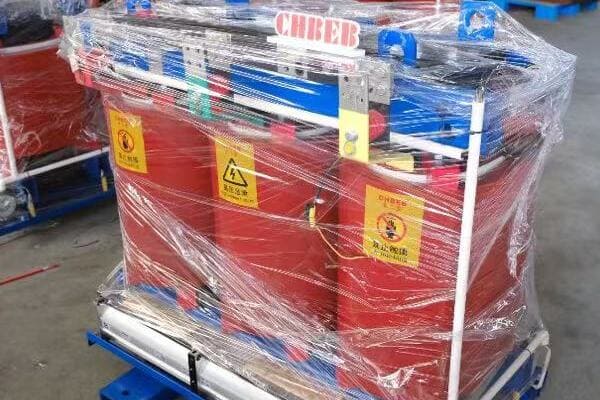
In this comprehensive guide, I’ll walk you through the ins and outs of 3 phase distribution transformers. Whether you’re a seasoned electrical engineer or a project manager looking to expand your knowledge, this article will provide you with the insights you need to understand and work with these essential power distribution components.
What Is a 3 Phase Distribution Transformer?
Have you ever wondered why some power systems use three wires instead of two? This is where 3 phase distribution transformers come into play. But what exactly are they, and how do they differ from their single-phase counterparts?
A 3 phase distribution transformer is a type of electrical transformer designed to convert high-voltage three-phase power to lower voltage levels suitable for end-user consumption. Unlike single-phase transformers, it handles three alternating currents, phase-shifted by 120 degrees, providing more efficient power transmission and distribution for larger loads.
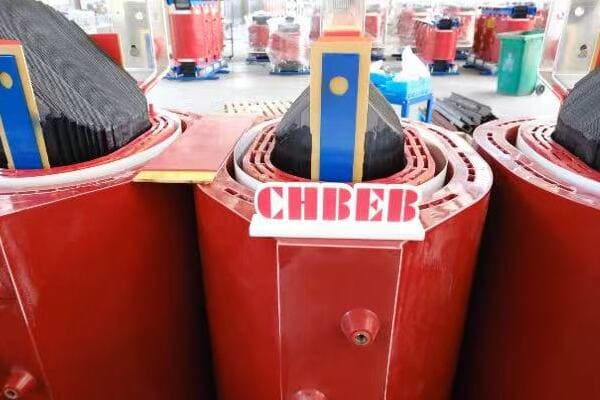
Understanding 3 Phase Distribution Transformers
Let’s break down the key aspects of these transformers:
- Basic Definition
- Comparison with Single-Phase Transformers
- Key Advantages
- Common Configurations
Basic Definition
A 3 phase distribution transformer is an electrical device that:
- Transforms voltage levels in three-phase power systems
- Maintains phase relationships between primary and secondary sides
- Typically steps down voltage for end-user distribution
I remember my first encounter with a 3 phase transformer during an industrial plant upgrade. The ability to efficiently power large machinery while maintaining balanced loads was a revelation in power distribution efficiency.
Comparison with Single-Phase Transformers
Here’s how 3 phase transformers differ from single-phase units:
| Aspect | 3 Phase Transformer | Single-Phase Transformer |
|---|---|---|
| Number of Windings | Three sets | One set |
| Power Capacity | Higher for same size | Lower for same size |
| Efficiency | Generally higher | Lower for large loads |
| Application | Industrial, commercial | Residential, small commercial |
Key Advantages
3 phase transformers offer several benefits:
- More efficient power transmission
- Better suited for large, balanced loads
- Reduced material costs for high-power applications
- Smoother power delivery with less pulsation
During a recent project for a manufacturing facility, the use of a 3 phase transformer allowed us to significantly reduce cable sizes and improve overall system efficiency compared to multiple single-phase units.
Common Configurations
3 phase transformers come in various configurations:
- Delta-Wye (Δ-Y): Most common for voltage step-down
- Wye-Wye (Y-Y): Used in some distribution systems
- Delta-Delta (Δ-Δ): Less common, used in some industrial applications
Understanding these configurations is crucial for proper system design and integration. I once encountered a situation where an incorrectly specified Delta-Wye configuration led to grounding issues in an industrial setting. This experience underscored the importance of understanding transformer configurations in real-world applications.
As we delve deeper into the components and workings of 3 phase transformers, keep in mind that these devices are fundamental to modern power distribution systems. Their ability to efficiently handle large loads and provide balanced power makes them indispensable in industrial, commercial, and utility-scale applications.
Basic Components and Internal Structure?
Are you finding it challenging to visualize what’s inside a 3 phase distribution transformer? You’re not alone. Many professionals struggle to understand the internal workings of these complex devices. But what if you could break down the structure into simple, understandable components?
A 3 phase distribution transformer consists of three main components: the core, windings, and insulation. The core, typically made of laminated steel, provides a magnetic path. Three sets of primary and secondary windings, usually copper or aluminum, are wound around the core. Insulation materials separate and protect these components, ensuring safe and efficient operation.
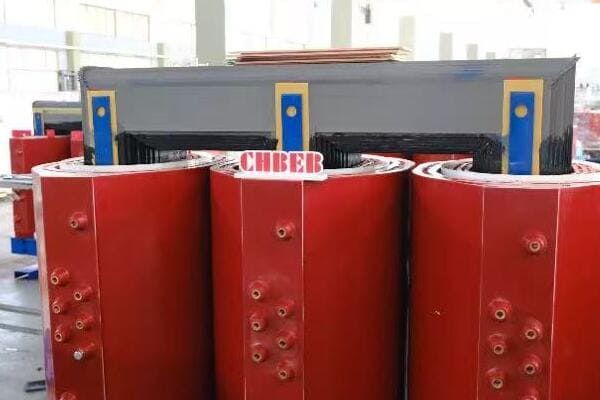
Exploring the Internal Structure
Let’s break down the key components and their functions:
- Core Structure
- Winding Arrangements
- Insulation Systems
- Connection Types
Core Structure
The core is the heart of the transformer:
- Usually made of grain-oriented silicon steel
- Laminated to reduce eddy current losses
- Comes in various designs (core-type, shell-type)
I once worked on a project where we opted for an amorphous metal core. The reduction in core losses was significant, leading to improved efficiency, especially under partial load conditions common in commercial buildings.
Winding Arrangements
Windings are crucial for voltage transformation:
- Primary windings: Connected to the high-voltage source
- Secondary windings: Provide the transformed voltage output
- Made of copper or aluminum, depending on design requirements
During a recent industrial transformer installation, we chose copper windings for their superior conductivity, despite the higher cost. This decision paid off in terms of long-term efficiency and reduced heat generation.
Insulation Systems
Proper insulation is vital for safety and performance:
- Oil-immersed systems: Common in larger outdoor units
- Dry-type systems: Often used in indoor applications
- Solid insulation: Used between winding layers
I recall a project where we opted for a dry-type transformer for a hospital installation. The reduced fire risk and maintenance needs were crucial factors in this decision, highlighting the importance of choosing the right insulation system for the application.
Connection Types
3 phase transformers can have different connection configurations:
- Delta (Δ): Windings connected in a triangle
- Wye (Y): Windings connected in a star formation
- Combinations: Delta-Wye, Wye-Delta, etc.
Here’s a quick reference table for common connection types:
| Connection Type | Primary | Secondary | Common Use |
|---|---|---|---|
| Delta-Wye (Δ-Y) | Delta | Wye | Step-down distribution |
| Wye-Delta (Y-Δ) | Wye | Delta | Step-up transmission |
| Wye-Wye (Y-Y) | Wye | Wye | Some distribution systems |
Understanding these connections is crucial. In a recent project, we had to change from a Delta-Wye to a Wye-Delta configuration to address grounding issues in an industrial setting. This flexibility in connection types is a key advantage of 3 phase transformers.
Key considerations when examining 3 phase transformer components:
- Core material affects efficiency and cost
- Winding material choice impacts performance and longevity
- Insulation type determines application suitability (indoor vs. outdoor)
- Connection type influences system grounding and harmonics handling
In my experience, a thorough understanding of these components is essential for proper transformer selection and application. I’ve seen projects where overlooking seemingly minor details in component selection led to significant issues down the line.
As we move forward to discuss how these components work together, remember that the internal structure of a 3 phase transformer is a marvel of electrical engineering. Each component plays a crucial role in ensuring efficient and reliable power distribution, making these transformers indispensable in our modern electrical infrastructure.
How Does a 3 Phase Transformer Work?
Have you ever wondered about the magic happening inside a 3 phase transformer? The process might seem complex, but understanding it is crucial for anyone working with power distribution systems. So, how exactly does a 3 phase transformer convert and distribute electrical energy?
A 3 phase transformer works by electromagnetic induction. It takes three-phase AC input, each phase 120 degrees apart, and transforms the voltage level while maintaining the phase relationships. The primary windings create a changing magnetic field in the core, which induces voltage in the secondary windings. This process occurs simultaneously for all three phases, resulting in efficient power transformation.
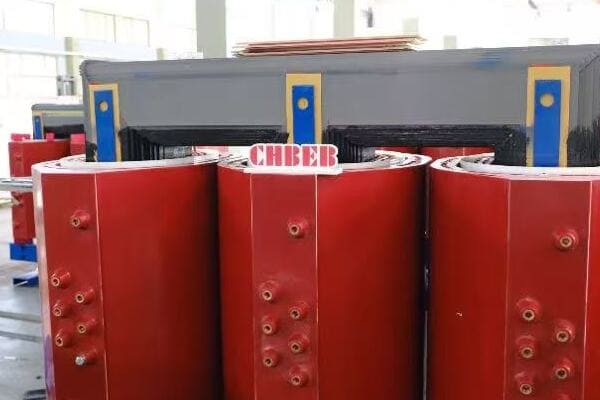
The Working Principle of 3 Phase Transformers
Let’s break down the operation into key steps:
- Input of Three-Phase Power
- Electromagnetic Induction Process
- Voltage Transformation
- Output and Load Distribution
Input of Three-Phase Power
The process begins with the input of three-phase power:
- Three alternating currents, each 120 degrees out of phase
- Typically high voltage for efficient long-distance transmission
- Connected to the primary windings of the transformer
I remember a project where we had to synchronize the input phases from multiple sources. The precision required in this step highlighted the importance of proper phase management in 3 phase systems.
Electromagnetic Induction Process
This is where the core principle of transformer operation comes into play:
- Alternating current in primary windings creates a changing magnetic field
- The magnetic field is concentrated and directed by the transformer core
- The changing magnetic field induces voltage in the secondary windings
During a recent educational seminar, I used a small-scale model to demonstrate this principle. Seeing the direct relationship between the primary current and the induced secondary voltage was a powerful learning moment for many attendees.
Voltage Transformation
The actual voltage change occurs due to the winding ratio:
- Ratio of primary to secondary turns determines voltage transformation
- Step-down transformers have fewer secondary turns than primary
- Step-up transformers have more secondary turns than primary
Here’s a simple formula to remember:
Voltage Ratio = Primary Turns / Secondary Turns
For example, in a step-down transformer:
- Primary: 1000 turns, 11000V
- Secondary: 100 turns
- Secondary Voltage = (100/1000) * 11000V = 1100V
Output and Load Distribution
The final step involves delivering the transformed power:
- Three-phase output maintains 120-degree phase separation
- Balanced loads are distributed across all three phases
- Various connection types (e.g., Wye, Delta) affect the final output configuration
I once worked on an industrial project where load balancing was critical. The ability of the 3 phase transformer to evenly distribute large loads across all phases was crucial in maintaining system stability and efficiency.
Key points to remember about 3 phase transformer operation:
- Phase relationships are maintained throughout the transformation process
- The core plays a crucial role in efficient magnetic field transfer
- Winding ratios determine the voltage transformation
- Load balancing across phases is a key advantage of 3 phase systems
In my experience, understanding these operational principles is crucial for effective system design and troubleshooting. I’ve seen cases where overlooking the importance of phase balance or misunderstanding winding ratios led to significant issues in power distribution systems.
As we continue to explore the applications and selection of 3 phase transformers, keep in mind that this fundamental understanding of their operation is the foundation for all practical applications. Whether you’re designing a new installation or optimizing an existing one, this knowledge will prove invaluable in making informed decisions.
Where Are 3 Phase Distribution Transformers Used?
Are you curious about where you might encounter 3 phase distribution transformers in the real world? These powerful devices are more common than you might think, playing a crucial role in various sectors of our modern infrastructure. But in which specific applications are they most prevalent and why?
3 phase distribution transformers are widely used in industrial parks, commercial buildings, and public facilities. They’re essential in manufacturing plants for powering heavy machinery, in office complexes for efficient power distribution, and in utilities for substations. These transformers are also found in shopping malls, hospitals, schools, and anywhere requiring balanced, high-capacity power distribution for three-phase loads.

Common Applications of 3 Phase Distribution Transformers
Let’s explore the key areas where these transformers are indispensable:
- Industrial Sector
- Commercial Buildings
- Public Infrastructure
- Renewable Energy Systems
Industrial Sector
The industrial sector is a major user of 3 phase transformers:
- Manufacturing plants: Powering large machinery and production lines
- Chemical plants: Supporting high-power processes and equipment
- Mining operations: Providing power for heavy-duty extraction equipment
I once worked on a project for a large automotive manufacturing plant. The 3 phase transformers were crucial in efficiently distributing power to various high-demand areas of the facility, from welding stations to assembly lines.
Commercial Buildings
In the commercial sector, these transformers are essential for:
- Office complexes: Distributing power efficiently across multiple floors
- Shopping malls: Supporting diverse power needs, from lighting to HVAC
- Data centers: Ensuring reliable power for servers and cooling systems
During a recent data center project, we implemented multiple 3 phase transformers to handle the immense power requirements while maintaining redundancy and efficiency.
Public Infrastructure
3 phase transformers play a vital role in public facilities:
- Hospitals: Providing reliable power for critical medical equipment
- Schools and universities: Supporting diverse power needs across campuses
- Transportation hubs: Powering systems in airports and train stations
I recall a hospital upgrade project where the selection of appropriate 3 phase transformers was crucial for ensuring uninterrupted power supply to critical care units and operating rooms.
Renewable Energy Systems
In the growing field of renewable energy, these transformers are key:
- Wind farms: Stepping up voltage for long-distance transmission
- Solar power plants: Integrating generated power into the grid
- Hydroelectric facilities: Managing power output from generators
Here’s a quick reference table for 3 phase transformer applications:
| Sector | Application | Key Benefit |
|---|---|---|
| Industrial | Manufacturing | High power capacity for heavy machinery |
| Commercial | Office buildings | Efficient distribution across large spaces |
| Public | Hospitals | Reliable power for critical equipment |
| Renewable | Wind farms | Voltage step-up for transmission |
Key considerations for 3 phase transformer applications:
- Load characteristics: Matching transformer capacity to expected demand
- Environmental factors: Choosing between dry-type and oil-filled based on location
- Reliability requirements: Implementing redundancy in critical applications
- Future expansion: Planning for potential increases in power demand
In my experience, the versatility of 3 phase transformers makes them suitable for a wide range of applications. I’ve seen how their ability to handle large, balanced loads efficiently has made them the go-to choice in numerous projects across various sectors.
As we move forward to discuss top brands and selection criteria, keep in mind that understanding these diverse applications is crucial. It helps in appreciating the specific features and capabilities offered by different manufacturers, ensuring you can make informed decisions based on your particular application needs.
Comparison of Top Brands Offering 3 Phase Distribution Transformers?
Are you finding it challenging to choose between different brands of 3 phase distribution transformers? With so many options on the market, it’s easy to feel overwhelmed. But what if you had a clear comparison of top brands to guide your decision?
Leading brands in 3 phase distribution transformers include ABB, TBEA, Schneider Electric, and Shunted. ABB excels in epoxy resin cast dry-type transformers, ideal for commercial and healthcare applications. TBEA offers efficient oil-immersed types popular in industrial and utility sectors. Schneider Electric focuses on energy-efficient solutions for data centers, while Shunted specializes in dry-type transformers for educational and small substation applications.
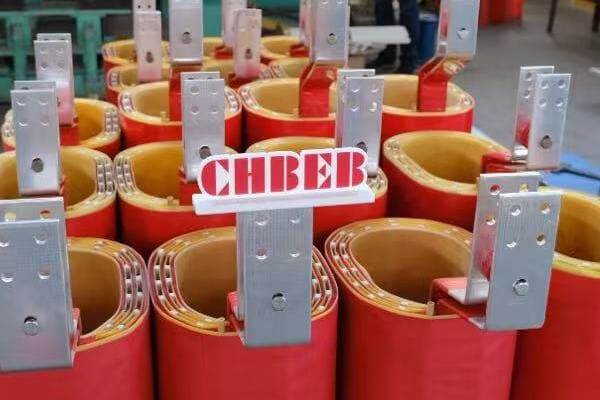
Analyzing Top 3 Phase Transformer Brands
Let’s explore the strengths and specialties of these leading brands:
- ABB
- TBEA
- Schneider Electric
- Shunted
ABB
ABB is known for its innovative and reliable transformers:
- Specializes in epoxy resin cast dry-type transformers
- Often uses Dyn11 vector group configuration
- Excellent for commercial and healthcare applications
I recently worked on a hospital renovation project where we chose ABB’s dry-type transformers. Their low noise levels and fire-resistant properties were crucial for the sensitive hospital environment.
TBEA
TBEA is renowned for its efficient oil-immersed transformers:
- Often utilizes YNd11 vector group configuration
- Popular in industrial settings and national grid projects
- Known for high efficiency and reliability
During a large industrial park development, we implemented TBEA’s oil-immersed transformers. Their ability to handle high loads efficiently was perfect for thediverse power needs of multiple manufacturing facilities.
Schneider Electric
Schneider Electric focuses on energy-efficient solutions:
- Offers low-loss winding designs
- Provides comprehensive energy management solutions
- Ideal for data centers and smart building applications
I recall a data center project where Schneider Electric’s transformers were integrated with their energy management system. The result was a highly efficient and easily monitored power distribution setup.
Shunted
Shunted specializes in dry-type transformers:
- Known for innovative ventilation channel designs
- Popular in educational institutions and small substations
- Offers compact solutions for space-constrained applications
In a recent university campus upgrade, we chose Shunted transformers for their compact design and low maintenance requirements, which were perfect for the limited space in campus buildings.
Here’s a comparison table of these top brands:
| Brand | Technology Advantage | Typical Structure | Recommended Application |
|---|---|---|---|
| ABB | Epoxy resin cast dry-type | Dyn11 connection | Commercial & Healthcare |
| TBEA | High-efficiency oil-immersed | YNd11 connection | Industrial & National Grid |
| Schneider Electric | Energy-efficient solutions | Low-loss winding design | Data Centers |
| Shunted | Dry-type with ventilation innovation | Ventilation channel design | Educational & Small Substations |
Key considerations when comparing these brands:
- Application-specific requirements: Match the brand’s specialty to your project needs
- Efficiency ratings: Compare energy efficiency, especially for long-term operations
- Environmental factors: Consider dry-type vs. oil-immersed based on installation location
- Maintenance needs: Evaluate the long-term maintenance requirements and costs
- Integration capabilities: Look at compatibility with existing systems or future upgrades
In my experience, the choice of brand often comes down to the specific requirements of the project. For instance, in a recent industrial project where high efficiency and the ability to handle harsh environments were crucial, TBEA’s oil-immersed transformers were the clear choice. However, for a university library renovation where fire safety and low noise were priorities, ABB’s dry-type transformers were more suitable.
Remember, while these are top brands, the best choice depends on your specific needs. Always consider factors like local support, warranty terms, and compatibility with your existing infrastructure when making your decision.
As we move on to discuss how to select the right 3 phase transformer for your project, keep these brand comparisons in mind. They’ll serve as a valuable reference point in understanding how different manufacturers cater to various application needs and technical requirements.
How to Select the Right 3 Phase Transformer for Your Project?
Are you feeling overwhelmed by the process of choosing the right 3 phase transformer for your project? You’re not alone. Many engineers and project managers struggle with this critical decision. But what if you had a clear, step-by-step approach to ensure you select the perfect transformer for your specific needs?
Selecting the right 3 phase transformer involves assessing load requirements, considering environmental factors, evaluating efficiency standards, and understanding installation constraints. Key factors include kVA rating, primary and secondary voltages, vector group, impedance, and cooling method. Also, consider future expansion needs, maintenance requirements, and compliance with relevant IEC or ANSI standards for your region.
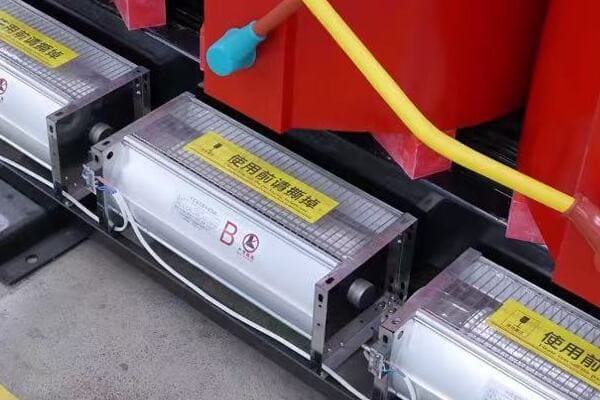
Key Steps in Selecting a 3 Phase Transformer
Let’s break down the selection process into manageable steps:
- Determine Load Requirements
- Consider Environmental Factors
- Evaluate Efficiency and Standards
- Assess Installation and Maintenance Needs
- Plan for Future Expansion
Determine Load Requirements
Start by accurately assessing your power needs:
- Calculate total kVA required for all connected loads
- Consider load factor and diversity factor
- Determine required primary and secondary voltages
I once worked on a project where underestimating the load led to an undersized transformer. We had to replace it within a year, causing unnecessary downtime and extra costs. Always err on the side of caution when calculating load requirements.
Consider Environmental Factors
The installation environment plays a crucial role:
- Indoor vs. outdoor installation
- Ambient temperature range
- Altitude (affects cooling efficiency)
- Presence of corrosive or humid conditions
During a coastal industrial project, we opted for specially designed transformers with enhanced corrosion resistance. This decision significantly extended the transformer’s lifespan in the harsh, salt-laden environment.
Evaluate Efficiency and Standards
Energy efficiency is increasingly important:
- Check for compliance with efficiency standards (e.g., DOE 2016 in the US)
- Consider total cost of ownership, including energy losses
- Ensure compliance with relevant IEC or ANSI standards
In a recent commercial building project, choosing a high-efficiency transformer led to significant energy savings over time, justifying the higher initial investment.
Assess Installation and Maintenance Needs
Consider practical aspects of installation and upkeep:
- Space constraints and weight limitations
- Noise level requirements (especially for indoor installations)
- Ease of maintenance and accessibility
- Cooling method (ONAN, ONAF, etc.)
I recall a project where we had to use a compact dry-type transformer due to severe space limitations in an urban substation. Understanding these constraints early in the selection process was crucial.
Plan for Future Expansion
Think ahead to potential future needs:
- Consider potential load growth
- Evaluate the possibility of paralleling transformers
- Look at options for easy capacity upgrades
Here’s a quick reference table for key selection criteria:
| Criterion | Considerations | Impact |
|---|---|---|
| kVA Rating | Total load, future growth | Determines capacity |
| Voltage Levels | Primary/secondary requirements | Affects system compatibility |
| Efficiency | Energy losses, standards compliance | Influences operating costs |
| Environmental | Indoor/outdoor, temperature, altitude | Affects design and longevity |
| Maintenance | Accessibility, cooling method | Impacts long-term costs |
Key tips for selecting the right 3 phase transformer:
- Always include a safety margin in your load calculations
- Consider the total cost of ownership, not just the initial price
- Consult with manufacturers or experts for complex applications
- Review case studies of similar installations
- Consider conducting site visits to see transformers in similar applications
In my experience, successful transformer selection comes down to a balance of technical requirements, practical considerations, and future-proofing. I’ve seen projects succeed when all these factors were carefully weighed, and struggle when even one was overlooked.
Remember, selecting the right transformer is not just about meeting current needs; it’s about ensuring your power distribution system remains efficient, reliable, and adaptable for years to come. By following these steps and considering all relevant factors, you can make an informed decision that will serve your project well into the future.
Conclusion
3 phase distribution transformers are crucial components in modern power systems, offering efficient and reliable power distribution for various applications. Understanding their structure, operation, and selection criteria is essential for engineers and project managers. By considering factors like load requirements, efficiency, and environmental conditions, you can choose the right transformer to ensure optimal performance and longevity in your power distribution system.
Remember, at chbeb-ele, we’re not just sharing information – we’re empowering you to be part of the solution in creating a secure, clean, and efficient energy future. Let’s continue this journey together.
Free CHBEB Transformer Catalog Download
Get the full range of CHBEB transformers in one catalog.
Includes oil-immersed, dry-type, pad-mounted, and custom solutions.
Quick Message
Request A free quote
We'd like to work with you
- +86 15558785111
- [email protected]
- +86 15558785111
What We Do
CHINA BEI ER BIAN (CHBEB) GROUP, with 218 million in registered capital, originated from Beijing Beierbian Transformer Group. Headquartered in Beijing for R&D, it operates major production bases in Nanjing and Yueqing, producing high-quality products.
Latest Product
address
BeiJing
No 3,RongJing East Road,BeiJing Economic Technological Development Area,BeiJing,China
JiangSu
No 7️Xiangfeng Road,Jiangning,NanJing,JiangSu,China
WenZhou
No.211, Wei 16 Road, Industrial Zone, Yueqing, Wenzhou, Zhejiang, China.
XiangYang Industrial Zone ,YueQing,WenZhou,ZheJiang,China
contact us
- [email protected]
- +86 13057780111
- +86 13057780111
- +86 15558785111
Copyright © Bei Er Bian Group


